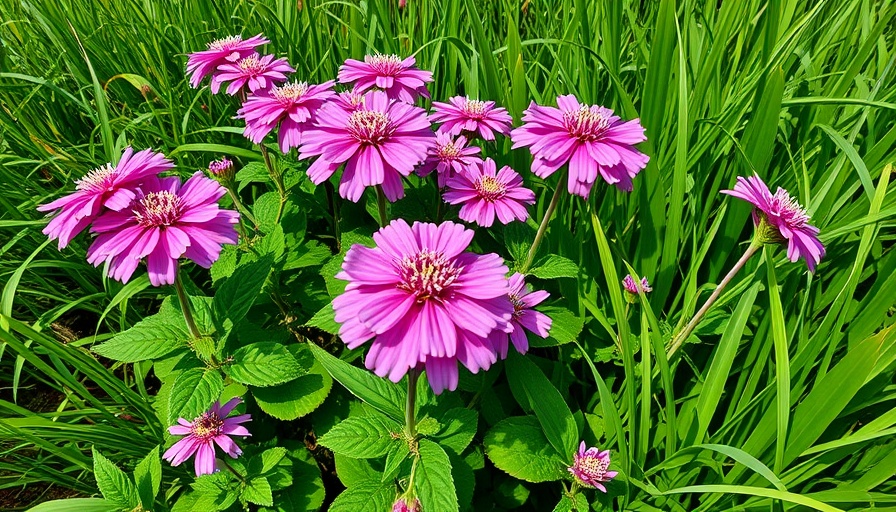
Understanding Bee Balm: A Glorious Yet Controversial Addition to Gardens
Bee balm, known scientifically as Monarda, is a vibrant flowering plant cherished for its colorful blooms that attract pollinators like bees, butterflies, and hummingbirds. The plant, which belongs to the mint family, is praised for its beauty and ease of growth. However, many gardeners often grapple with the question: is bee balm truly invasive? The answer is nuanced.
What Makes Bee Balm Potentially Invasive?
The spreading root systems of bee balm allow it to thrive in rich, moist soil, leading it to propagate aggressively. This can hinder the growth of other plants by creating a dense mass that competes for sunlight, nutrients, and water. Despite this invasive tendency, it isn't considered invasive in all regions. The definition of invasive, as stated by the USDA, implies the plant must be non-native and disrupt ecosystems. While native species like M. fistulosa and M. menthifolium may expand rapidly in certain conditions, they contribute positively to their ecosystems by supporting local pollinators.
Five Effective Tips for Managing Bee Balm Spread
To enjoy the beauty of bee balm without losing control of your garden, consider these practical management tips:
1. Use Rhizome Barriers
Placing physical barriers made of non-permeable material can effectively limit the spread of bee balm’s rhizomes. This method creates a controlled environment that allows for the enjoyment of the plant without rampant growth.
2. Plan Isolated Placements
Strategically placing bee balm away from other plants, or in designated areas, can reduce its tendency to take over. This isolation helps maintain a balanced garden while allowing bee balm to flourish safely.
3. Grow in Containers
Container gardening is an excellent way to enjoy the beauty of bee balm without the risk of it spreading uncontrollably throughout your landscape. Using pots can not only control its growth but can also suit small spaces.
4. Practice Regular Smothering
Covering the soil around bee balm with a layer of mulch or other ground cover can restrict its growth by limiting light and competitive roots. This method also benefits overall garden maintenance.
5. Create Divisions, Cut, or Pull Plants
Regularly dividing and thinning out the plants helps manage their spread. Pulling unwanted shoots before they establish roots can also keep your garden in check.
Why Controlling Bee Balm is Essential
The uncontrolled spread of bee balm can lead to unbalanced ecosystems within your garden, harming the growth of other plants and altering the intended landscape. By implementing management strategies, gardeners can appreciate bee balm's beauty while controlling its potential to dominate.
Final Thoughts: Embrace a Balanced Approach
Ultimately, enjoying bee balm in your garden is possible without letting it take over. With thoughtful management techniques, you can cultivate a dynamic and flourishing garden. Whether creating beautiful flower beds, enhancing backyard landscaping, or designing functional garden borders, bee balm can coexist harmoniously without overpowering.
Consider implementing some of these tips to promote both the beauty and balance of your garden, ensuring that all your plants thrive together.
 Add Row
Add Row  Add
Add 




Write A Comment